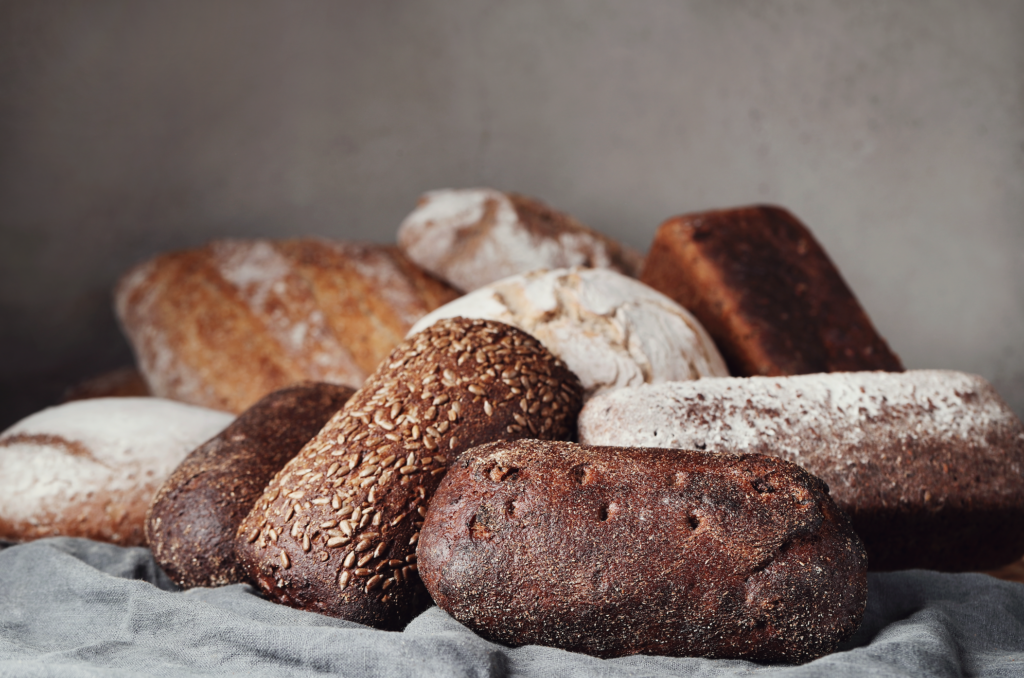Starchy foods like potatoes, bread, rice and pasta are rich in vitamins and minerals. They are a good source of fibre and are the best energy providers for your body.

High-fibre versions are the best. They help to keep your gut healthy and will keep you active for longer between meals.
-
Choose brown rice, wholewheat pasta and wholegrain bread instead of white
-
Wholegrain breakfast cereals like porridge and bran flakes are a brilliant start to the day
-
Baked potatoes eaten with their skins are filling – and great for fibre too
Potatoes, bread, rice and pasta are naturally low in fat – until we add fats like butter and cheese. Go easy on these extras to keep these foods low in fat and healthy.
How much fibre should I be eating?
Starchy foods should make up just over a third of what you eat. Try to base your meals around these foods rather than making them the centre of your meal.
- 2 to 5 year-olds: need at least 15g of fibre a day
- 5 to 11 year-olds: need at least 20g of fibre a day
- 11 to 16 year-olds: need at least 25g of fibre a day
- 16+ year-olds: need at least 30g of fibre a day
What is classed as a reasonable portion of fibre?
-
50 – 75g Uncooked Rice
-
75g – 100g Uncooked Dried Pasta
-
2 medium or 4 small potatoes
-
2 slices wholemeal bread
-
1 wholemeal pitta bread
-
40 – 50g dry porridge oats
-
40 – 50g bran flakes

Tips to get enough starchy foods
-
BREAKFAST: Try to start the day with an energy-giving starchy food. Examples being: wholemeal toast, porridge or a healthy wholegrain breakfast cereal
-
LUNCH: Try out different types of breads – rolls, wraps, pitta or sliced bread and go for wholegrain breads as often as you can.
-
DINNER: Base your meal around starchy foods like potatoes, rice, pasta or bread.
What is fibre?
Fibre is found in plant foods including starchy foods, beans and pulses, fruit, vegetables, nuts and seeds. It is an important part of a healthy diet. It prevents constipation and helps maintain a healthy gut. Getting enough fibre also lowers your risk of heart disease, diabetes and weight gain. However most of us need to eat more fibre.
Example of a fibre enriched diet:
-
Breakfast: Bowl of porridge made with milk with a handful of blueberries and 1 banana
-
Lunch: Baked potato with baked beans and salad
-
Dinner: Chilli con carne served with brown rice
-
Snack: Apple, crackers with peanut butter
How can I eat more fibre?
-
Choose wholemeal or wholegrain varieties of bread, cereals, pasta and rice
-
Eat vegetables and salad. Have some with lunch and dinner. Try vegetable soup at lunch or if you are short of time, frozen vegetables are just as good.
-
Eat fruit. Try to have 2-3 portions of fruit each day. Slice a banana on your cereal, slice some fruit into your salad or enjoy as a snack.
-
Eat potato skins.
-
Add peas, beans and lentils, chickpeas. Add them to soup, salads, stews and casseroles.
-
Dried fruit and nuts.







